How to Break in Your Pointe Shoes: Professional Tips
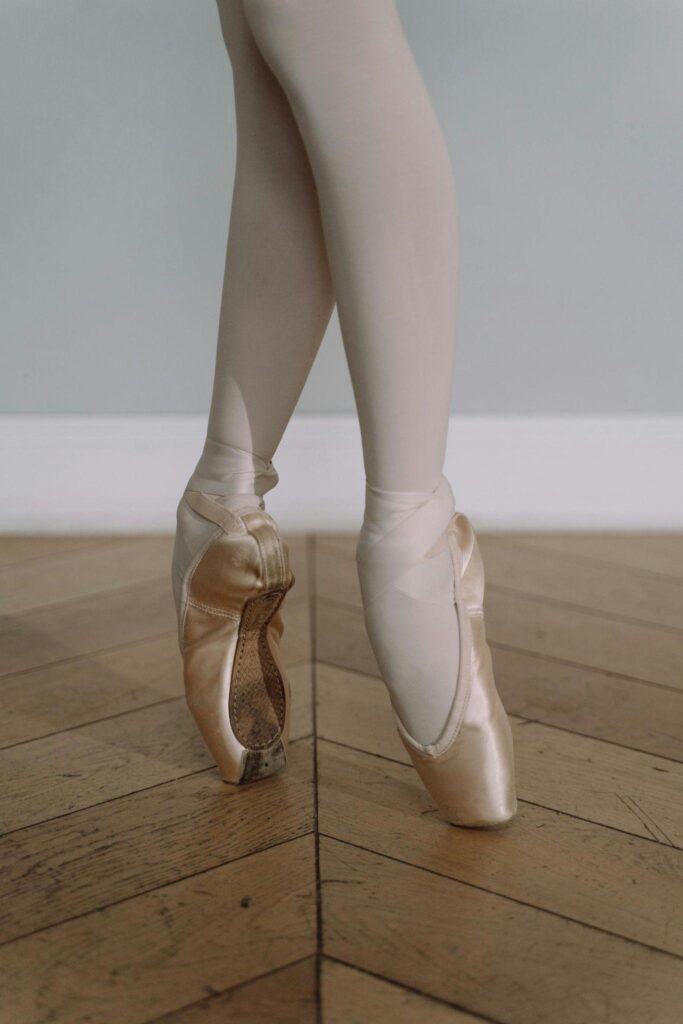
Breaking in your pointe shoes is a rite of passage for every ballerina.
When it comes to pointe shoes, every dancer will have their process for breaking them in.
For example, some dancers invest a lot of time and effort, while others do less.
In my experience, properly breaking in your pointe shoes can make a significant difference in how they feel, allowing them to fit like a glove, and be perfectly moulded to your feet.
In this blog post, I’ll outline the best techniques, tips, and tricks for breaking in your pointe shoes. Get ready to dance on pointe!
WHY DO YOU NEED TO BREAK IN YOUR POINTE SHOES?
Breaking in pointe shoes is essential for comfort, flexibility, and performance, as it moulds your shoes to your feet, and allows for better articulation and control.
When we talk about breaking in pointe shoes, we don’t mean bending them to the point where they become too soft, lose their support, or don’t last long.
Breaking in your pointe shoes can be as simple as a little gentle bending or just putting them on and doing some barre work.
I noticed a huge difference when I prepped my pointe shoes before wearing them compared to when I didn’t.
Not only did they feel more comfortable on my feet, but breaking them in allowed me to work through demi pointe and engage my arch more effectively.
If you are new to pointe, it’s generally advised not to do too much to your pointe shoes, as your focus should be on building the strength in your feet.
However, since pointe shoes are stiff and rigid, a little tender love and care can make dancing on pointe easier and more comfortable.
UNDERSTANDING YOUR POINTE SHOES
All pointe shoes are different in terms of size, shape, and materials.
Understanding their structure and materials will give you the knowledge to properly mould your pointe shoes to fit your unique foot shape.
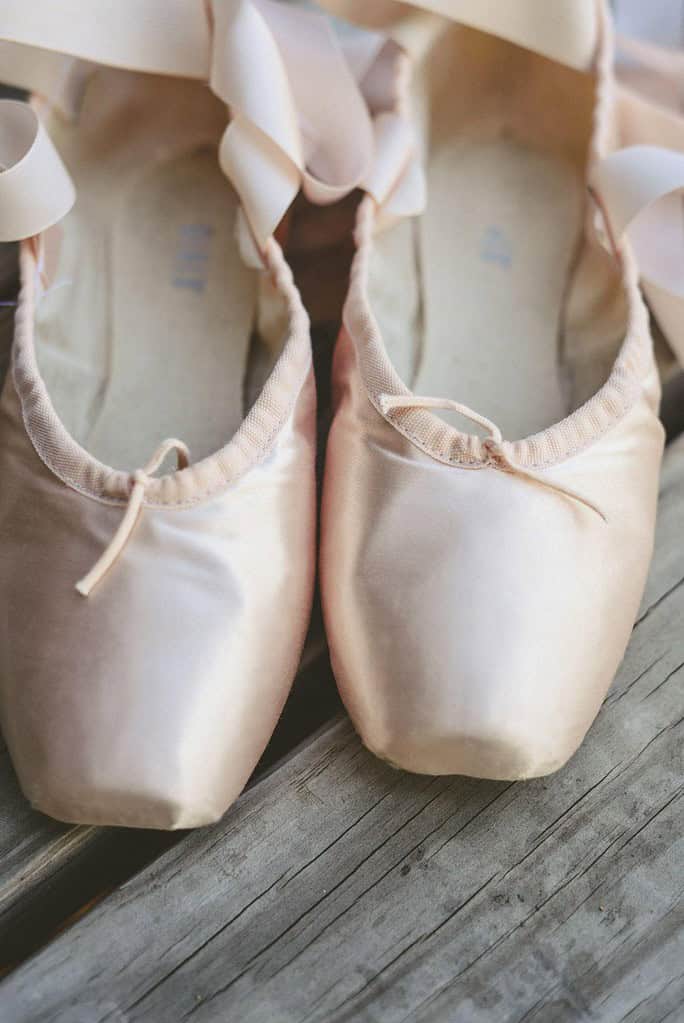
COMMON MATERIALS AND IMPACT
The materials of your pointe shoes can significantly impact the breaking-in process.
Shoes made with softer materials (canvas or softer leather), typically break in more quickly, offering immediate comfort but potentially less longevity.
Conversely, shoes made with harder materials (stiffer leather or multiple layers of hardened glue in the shank), often require a more extended and rigorous breaking-in process.
CHOOSING THE RIGHT SHOE
Whether it’s your first time buying pointe shoes or you’re looking to try a new model, brand, or style, I’d always recommend getting properly fitted by a professional.
The best pointe shoes for your feet will depend on your foot shape and size. I’d also recommend:
All these factors are crucial to finding the best fit, and making dancing on pointe a satisfying and pain-free experience.
INITIAL FITTING AND PREPARATION
A quick little secret.
It took me several years to find the shoe that best suited my needs for support, comfort, and durability.
So don’t be nervous about trying on various styles and brands to select the best pointe shoe for optimal support and comfort!
THE FITTING PROCESS
As mentioned earlier, having a professional fitter is crucial because they have the expertise to help you find the perfect fit.
Similarly, your feet can change shape as they become stronger or more flexible, so it’s important to adapt your pointe shoes accordingly.
SHOE PREPARATION
Once you’ve chosen your pointe shoes, it’s up to you how to proceed.
Properly breaking in your shoes not only extends their lifespan by ensuring they break to the right spots on your feet, but it also enhances their comfort and aesthetic appearance.
Once you’re satisfied with how they feel, you can:
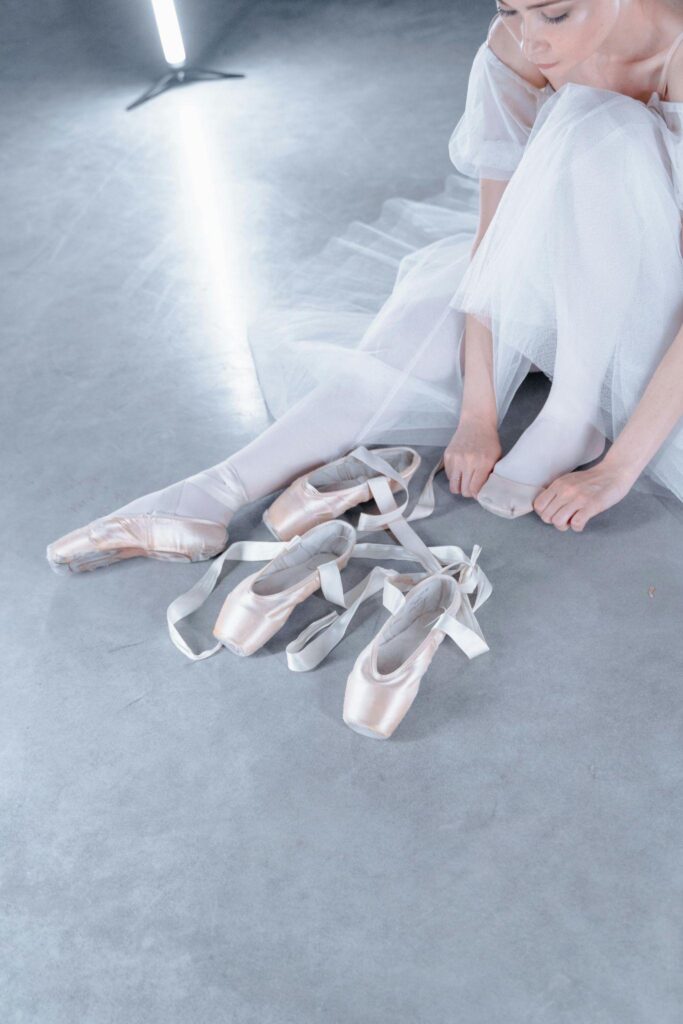
TECHNIQUES FOR BREAKING IN YOUR POINTE SHOES
It’s important to learn how to properly manipulate your pointe shoes for class, rehearsal, and performances.
I’ve learnt a few different techniques during my time as a professional ballerina, and I hope some of these techniques will help you achieve the best fit and performance.
STAND ON THE BOX
Begin softening the box of your point shoes by standing on the box of the shoes with just your heel.
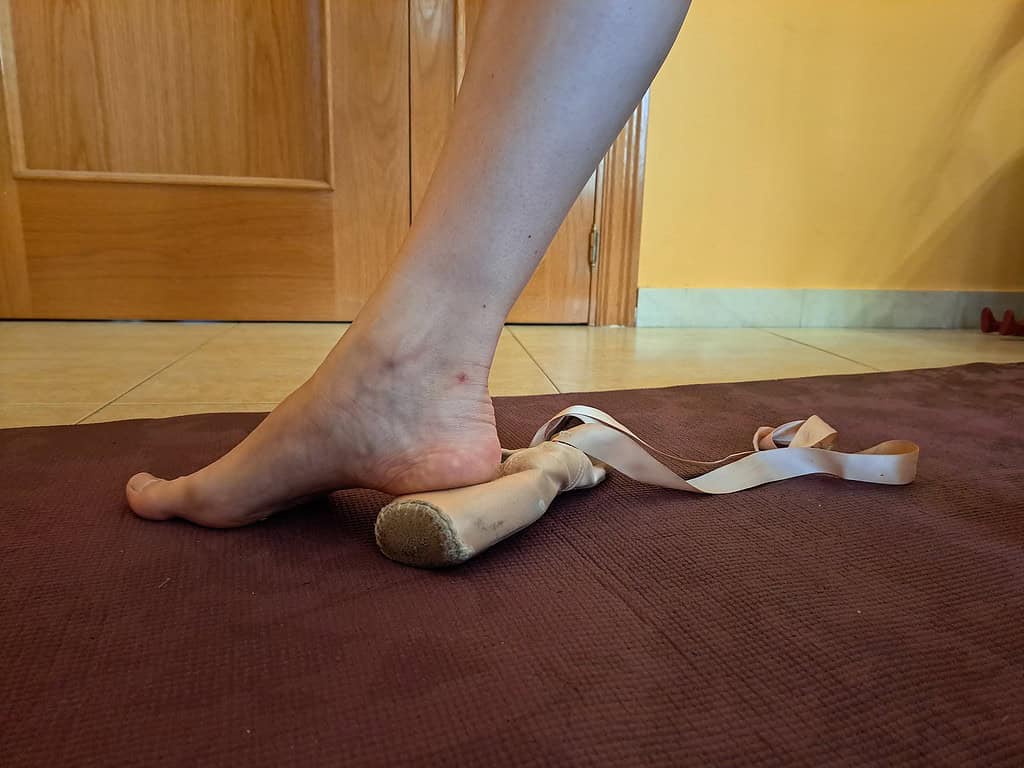
Don’t worry about any crunching noises; they’re normal and indicate that the material is starting to soften, widen, and flatten.
This is exactly what you want to make room for your feet and a more streamlined appearance.
FIND THE ¾ PART OF YOUR SHOE
Identify the ¾ point of your shoe, which will vary based on your foot shape and arch height.
Once you locate this point or the base of your arch, use your hands to gently bend the sole and shank of the shoe forward and backwards in that area.
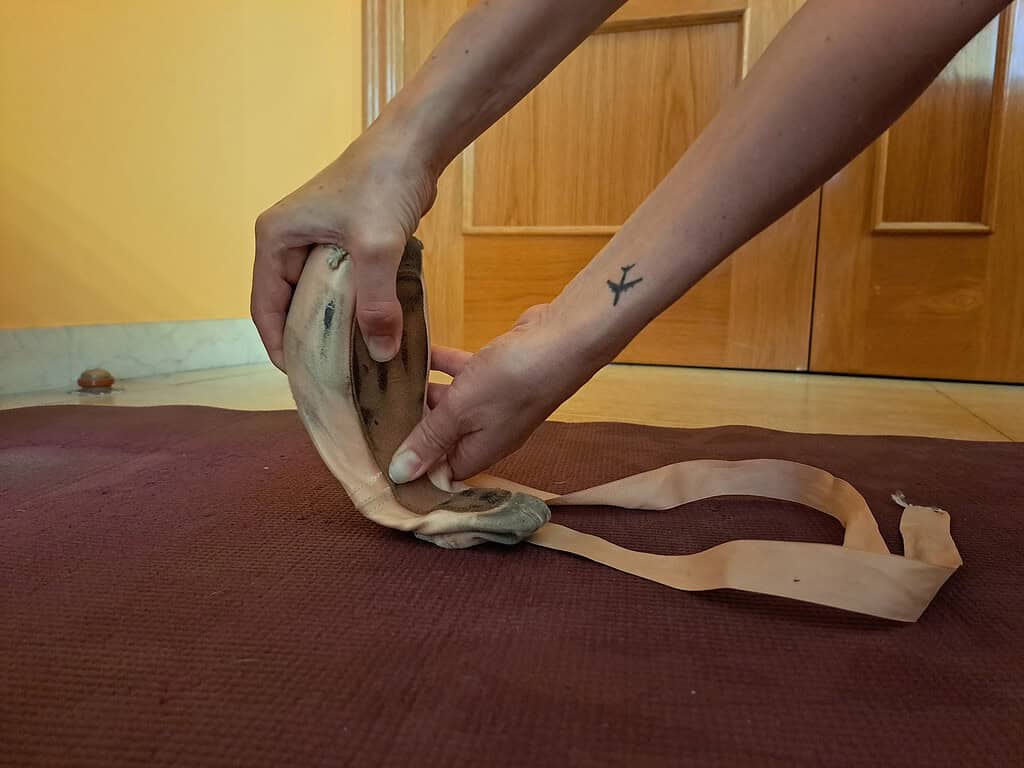
This technique helps mould the shoe to your arch, creating a more natural and elegant appearance.
BEND THE DEMI POINTE
Bend the demi pointe area of the shoe. It’s important to focus on the section where you will stand on demi pointe rather than the centre of the shoe.
Don’t go overboard though. Try and avoid excessive bending.
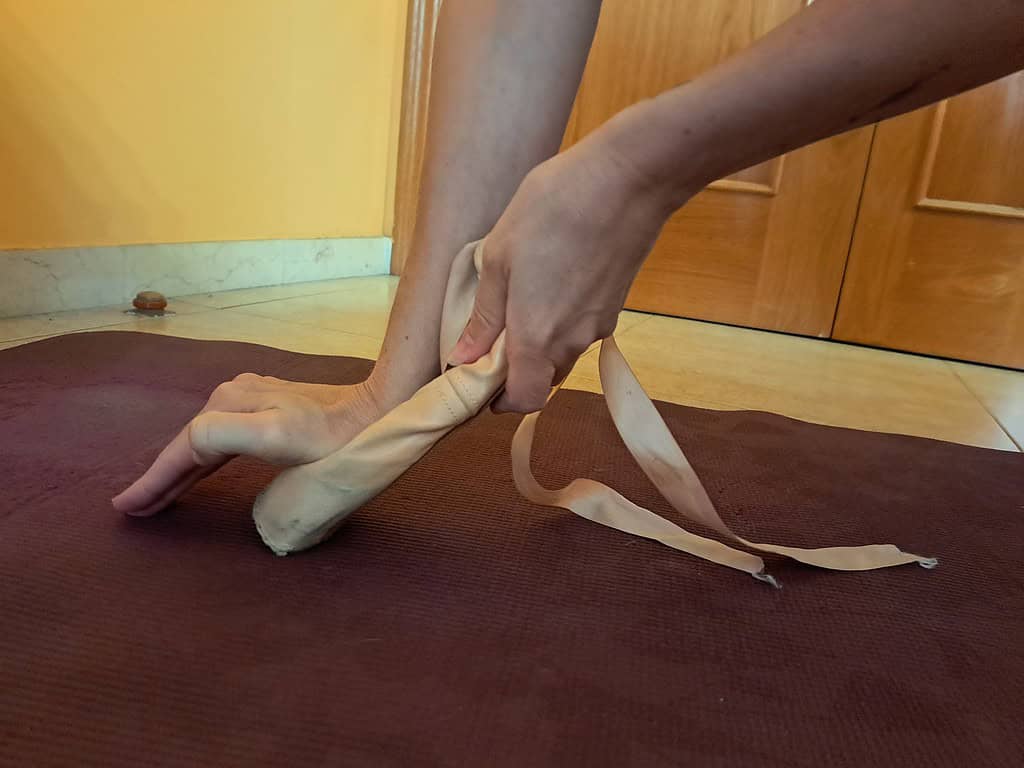
Just soften the stiffness slightly to make:
MAKE SOME NOISE
To reduce the extra noise when landing or running in pointe shoes, some dancers bang their shoes together or against a hard surface to soften the sound.
When doing this, make sure you support the arch and only hit the very tops of the shoes (the point where you’ll land from allegro).
It might be a bit of an arm workout, but it significantly reduces the noise of your pointe shoes.
WET THE HEELS
Applying a small amount of water to your heel tightens the satin around that area, helping it hug your heel more securely.
This technique is ideal for dancers who often find their pointe shoes slipping from their heels.
GENTLE STRETCHING
Once you put on your pointe shoes, you can gently stretch over your shoes or your arch to continue moulding them to the shape of your feet.
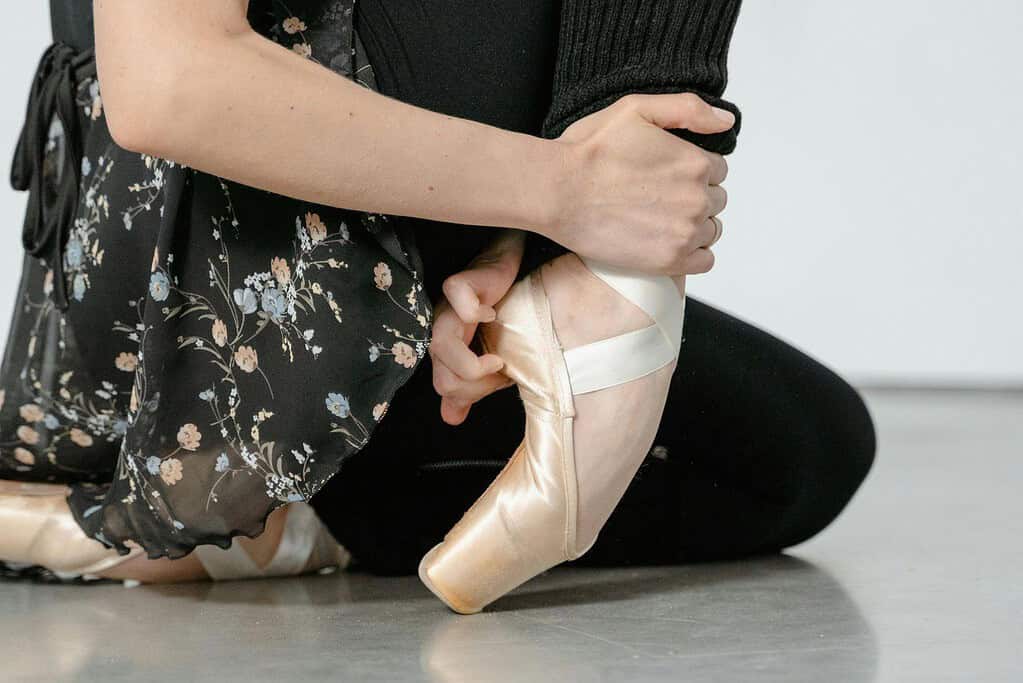
WEAR THEM AT THE BARRE
The best way to break in your shoes is to do some barre work.
Rises and relevés will help warm up and soften your shoes, allowing them to adapt to your feet through movement.
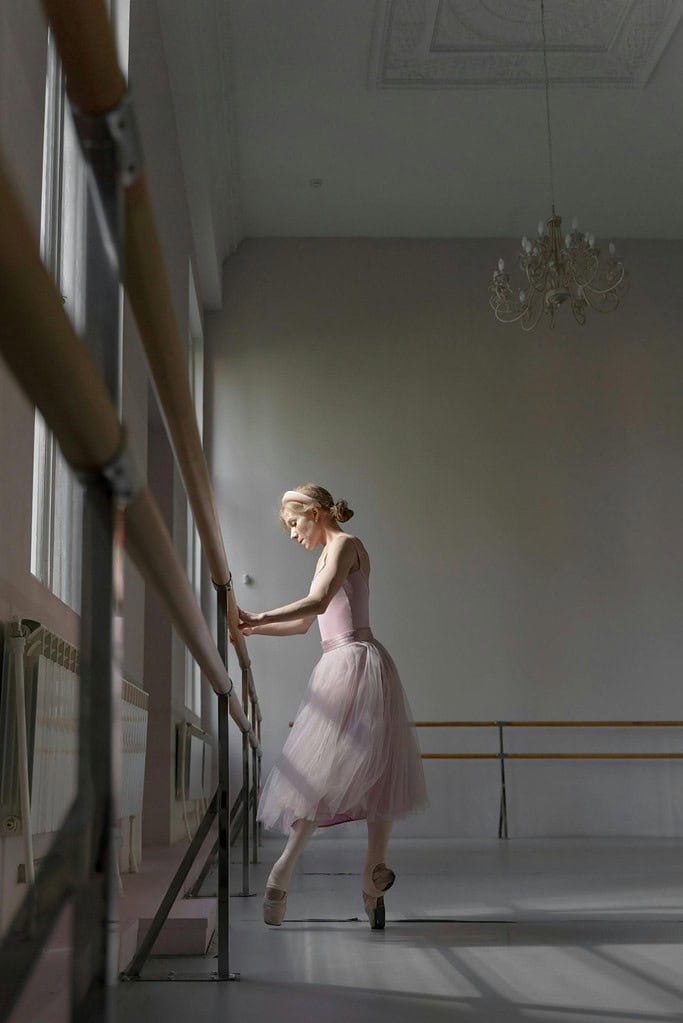
COMMON MISTAKES TO AVOID
BENDING IN THE WRONG AREA
Bending the shoe too low or towards the centre can compromise support and lead to an undesirable claw-like appearance when on pointe.
It’s important to focus on the correct area (that ¾ point we talked about), as well as the demi pointe position to maintain proper arch support and achieve an elegant, well-balanced position.
OVER-BENDING THE SHOE
Bending the shoe too much can compromise its support and result in an undesirable appearance on pointe.
Remember, bending the shoe should only be done to soften the material and help it mould more effectively to your feet.
YOUR SHOES DON’T FIT PROPERLY
Pointe shoes are different from regular shoes. Having extra wiggle room is not ideal, nor is it great if your toes are squeezed in or don’t sit flat in the shoe.
If you’re not satisfied with your shoes because they don’t fit well or cause significant pain and discomfort, change them immediately!
Your feet are your tools and should be cared for to prevent future damage and ensure a long-lasting dance career.
SIGNS YOUR POINTE SHOES ARE BROKEN IN PROPERLY
You will likely notice when your pointe shoes have been broken in properly, but be on the lookout for the following signs.
IMPROVED COMFORT
It’s always a good sign when your pointe shoes fit snugly without causing pain or discomfort.
This indicates that your pointe shoes have been properly moulded to the shape of your feet, allowing you to move easily and naturally with the material.
PROPER FUNCTIONALITY
Your pointe shoes are functioning properly when:
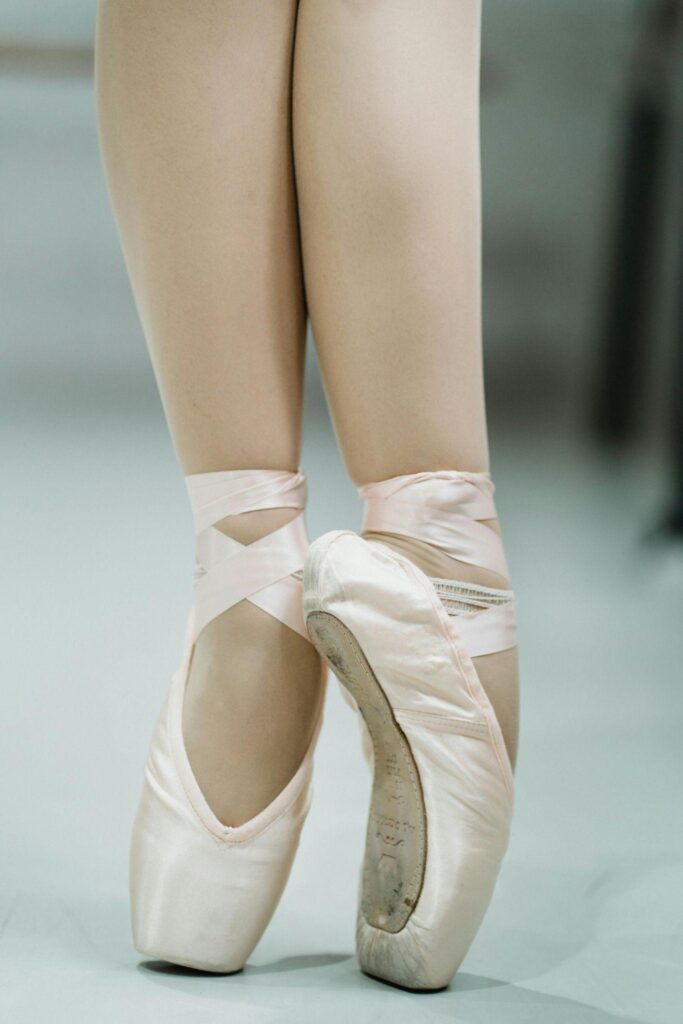
This is generally a good sign that they’ll last longer. However, the lifespan will also depend on:
AESTHETICALLY PLEASING
Whether you have less pronounced arches or high arches, when your pointe shoes align correctly with your feet, they will look beautiful regardless of your foot shape.
HOW TO BREAK IN YOUR POINTE SHOES – FAQS
DO YOU HAVE TO BREAK IN YOUR POINTE SHOES?
While it’s not entirely necessary to break in your pointe shoes, I would recommend it for enhanced performance, injury prevention, and longevity.
The breaking in process helps soften the materials, allowing the shoes to mould to the unique shape of your feet, ensuring a better fit and improved comfort.
HOW LONG DOES IT TAKE TO BREAK IN YOUR POINTE SHOES?
There is no set time it takes to break in your pointe shoes.
However, spending around 10 minutes initially softening the material, manipulating the shoes to fit your feet, and allowing for some gentle stretching can be effective.
As you continue to wear your pointe shoes in class, rehearsals, and performances, they will gradually adapt to your feet and continue to break down.
Remember to remove your shoes from your dance bag to provide proper ventilation. Moisture from sweat can speed up the breakdown process.
If possible, rotating between multiple pairs of shoes is highly recommended.
CAN I USE HEAT TO BREAK IN MY POINTE SHOES?
With modern technology, some pointe shoes benefit from heat to better adapt to your feet.
It’s not uncommon for dancers to use a hair dryer while wearing certain models.
Additionally, as you wear your pointe shoes, the natural heat and moisture from your feet will also help soften the rigidity and stiffness of the shoe materials.
WHAT SIGNS INDICATE MY POINTE SHOES ARE BROKEN IMPROPERLY?
When your pointe shoes are properly broken in, you will notice improved comfort when wearing them, and ease in rolling smoothly through demi pointe.
Remember, if your arches pop out of the shoes or you experience a claw-like appearance, it means the arch has been broken in the wrong spot, which can be extremely dangerous.
WHAT SHOULD I DO IF MY POINTE SHOES HURT AFTER BREAKING THEM IN?
If your pointe shoes still hurt after breaking them in, you might need to re-evaluate your breaking in method or spend some more time on specific areas.
This may involve more stretching, manipulation with your hands, or additional barre work.
Every dancer is different, and some may need extra time to adjust their shoes for full comfort.
Additionally, consider what’s inside your pointe shoes.
Make sure you have sufficient padding or cushioning, and add extra materials if needed to alleviate discomfort, especially from bunions, and to reduce friction between your feet and the shoes.
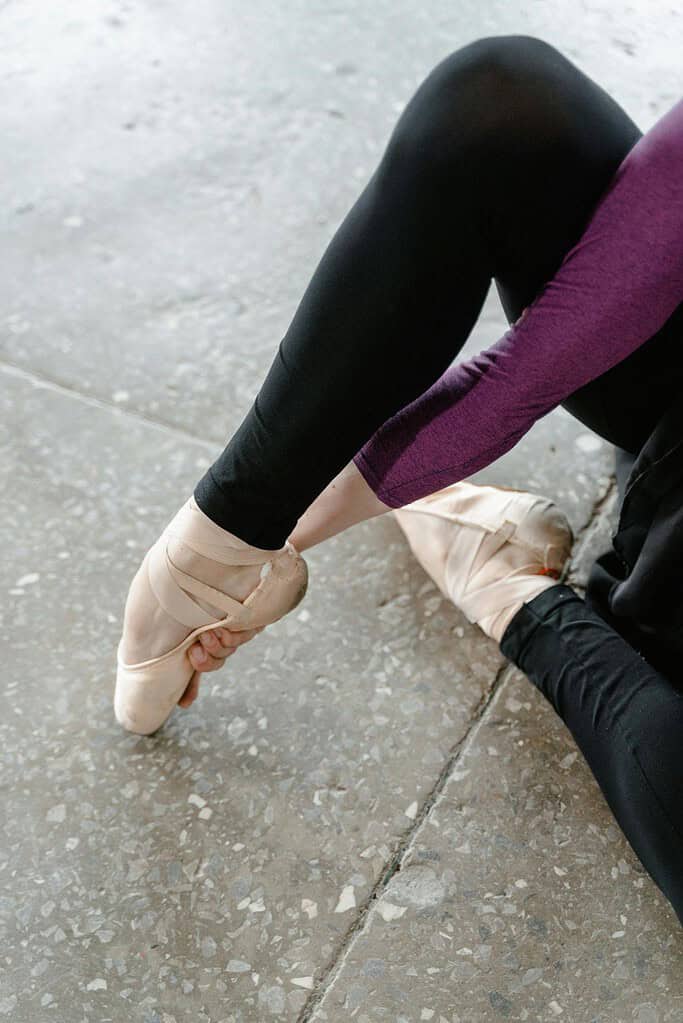
WRAP UP
Breaking in your pointe shoes doesn’t have to be a daunting task and the cracking of a new pair of pointe shoes is quite satisfying!
By following these techniques and tips, you can ensure your pointe shoes fit comfortably, align correctly with your foot shape, and enhance your ability to dance on pointe.
Remember to listen to your body, treat your shoes with love, and seek guidance if needed.
Happy dancing, and may your journey on pointe be as graceful as you are!






